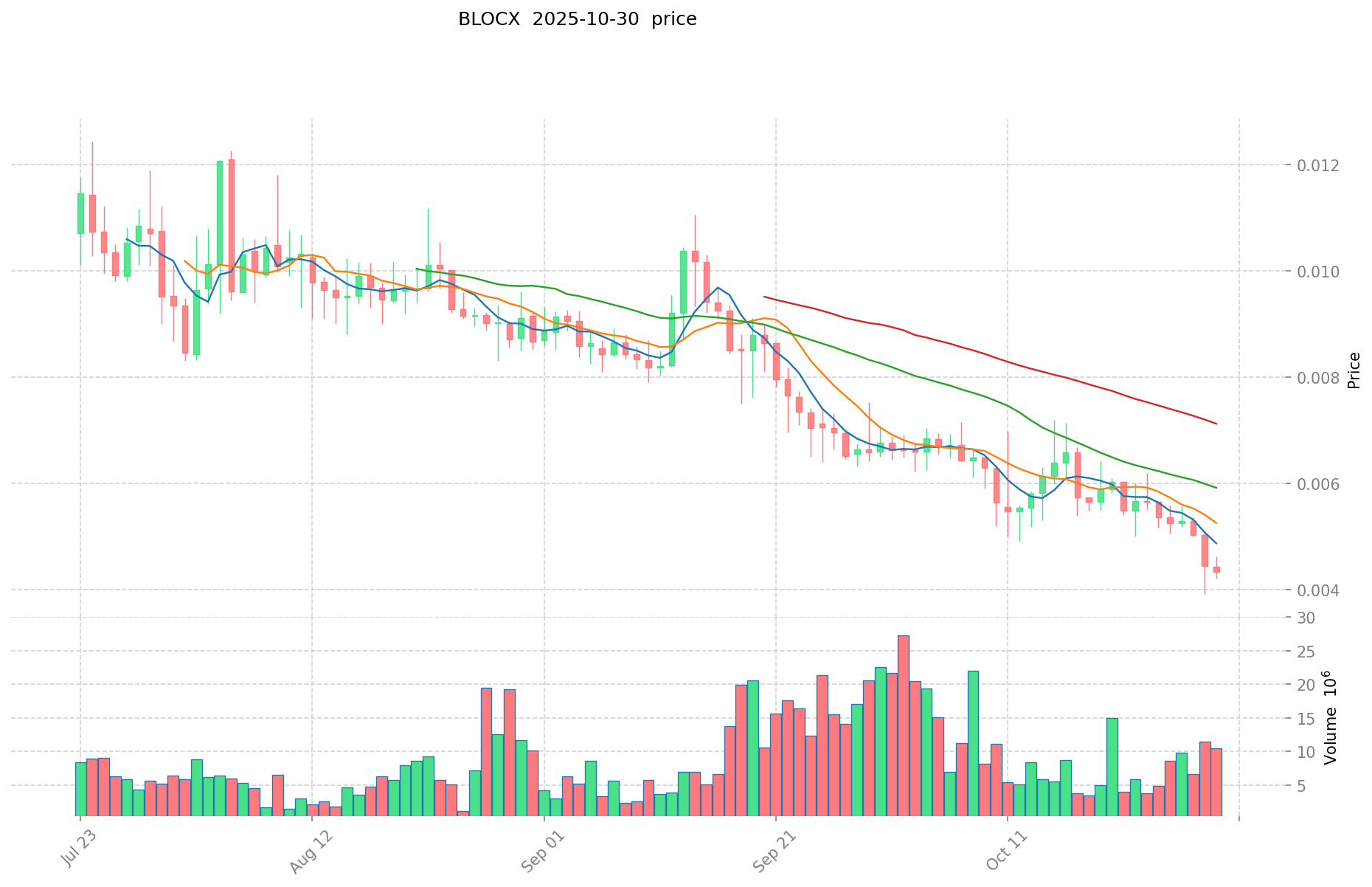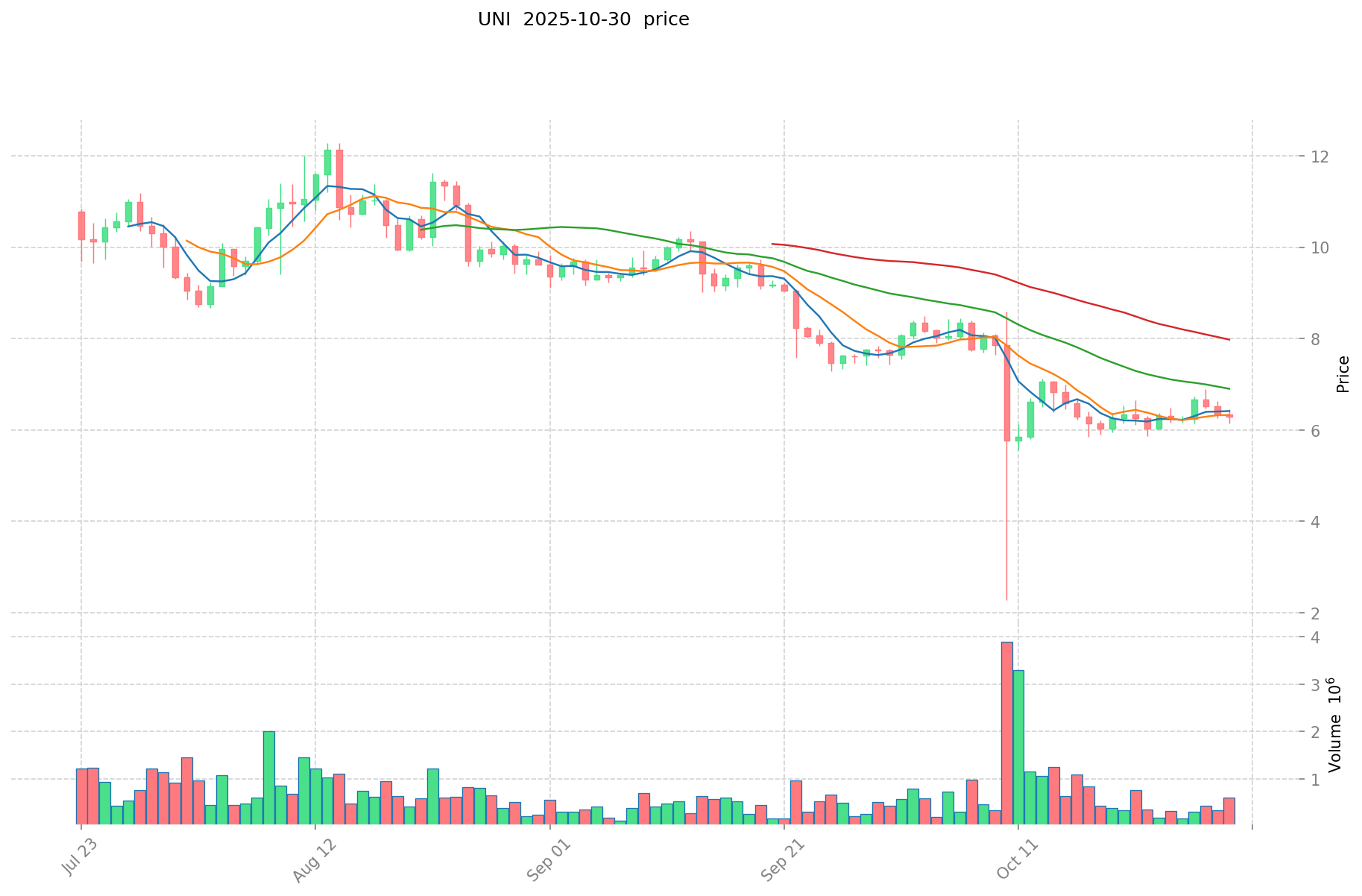BLOCX vs UNI: A Comprehensive Comparison of Two Leading Decentralized Exchange Platforms
Introduction: BLOCX vs UNI Investment Comparison
In the cryptocurrency market, the comparison between BLOCX vs UNI has always been an unavoidable topic for investors. The two not only show significant differences in market cap ranking, application scenarios, and price performance, but also represent different positions in the crypto asset landscape.
BLOCX (BLOCX): Since its launch, it has gained market recognition for its all-in-one desktop computer manager integrating Web 2.0 and Web 3.0 features.
Uniswap (UNI): Launched in 2020, it has been hailed as the first automatic market making transaction protocol based on the Ethereum blockchain, and is one of the most traded and highest market cap cryptocurrencies globally.
This article will provide a comprehensive analysis of the investment value comparison between BLOCX vs UNI, focusing on historical price trends, supply mechanisms, institutional adoption, technological ecosystems, and future predictions, attempting to answer the question investors care most about:
"Which is the better buy right now?"
I. Price History Comparison and Current Market Status
BLOCX and UNI Historical Price Trends
- 2021: UNI reached its all-time high of $44.92 due to the DeFi boom.
- 2024: BLOCX hit its peak price of $0.28995 as the project gained traction.
- Comparative analysis: During the recent market cycle, BLOCX dropped from its high of $0.28995 to a low of $0.003743, while UNI declined from $44.92 to its current price range.
Current Market Situation (2025-10-31)
- BLOCX current price: $0.003958
- UNI current price: $5.753
- 24-hour trading volume: $33,720.81 (BLOCX) vs $6,904,821.32 (UNI)
- Market sentiment index (Fear & Greed Index): 34 (Fear)
Click to view real-time prices:
- View BLOCX current price Market Price
- View UNI current price Market Price


Key Factors Influencing BLOCX vs UNI Investment Value
Supply Mechanism Comparison (Tokenomics)
- BLOCX: Limited total supply with deflationary mechanisms through transaction burning
- UNI: Governance token with controlled release schedule and community treasury allocation
- 📌 Historical pattern: Deflationary tokens like BLOCX tend to create price support during market downturns, while governance tokens like UNI experience higher volatility tied to protocol adoption.
Institutional Adoption and Market Applications
- Institutional holdings: UNI has greater institutional backing from major crypto funds and DeFi-focused investors
- Enterprise adoption: UNI maintains stronger integration with financial applications, while BLOCX focuses on specialized use cases
- Regulatory stance: Both face scrutiny, but UNI's established position as a governance token provides regulatory clarity advantage
Technical Development and Ecosystem Building
- BLOCX technical upgrades: Focus on scalability improvements and cross-chain functionality
- UNI technical development: Emphasis on v3 protocol optimizations and fee structure enhancements
- Ecosystem comparison: UNI maintains dominant position in DeFi liquidity provision, while BLOCX targets niche applications with competitive fee structures
Macroeconomic Factors and Market Cycles
- Performance during inflation: Both show correlation with broader crypto market, but UNI demonstrates stronger ties to overall DeFi sector performance
- Monetary policy impact: Interest rate changes affect UNI more directly due to its role in liquidity provision
- Geopolitical factors: Cross-border restrictions on exchanges influence both tokens' accessibility and trading volumes
III. 2025-2030 Price Prediction: BLOCX vs UNI
Short-term Prediction (2025)
- BLOCX: Conservative $0.00280095 - $0.003945 | Optimistic $0.003945 - $0.00548355
- UNI: Conservative $3.68832 - $5.763 | Optimistic $5.763 - $8.35635
Mid-term Prediction (2027)
- BLOCX may enter a growth phase, with an estimated price range of $0.0036248060475 - $0.006370871235
- UNI may enter a bullish market, with an estimated price range of $7.26864138 - $9.6639891075
- Key drivers: Institutional capital inflow, ETF, ecosystem development
Long-term Prediction (2030)
- BLOCX: Base scenario $0.00506882332792 - $0.007920036449876 | Optimistic scenario $0.007920036449876 - $0.010612848842834
- UNI: Base scenario $6.397119405047109 - $11.846517416753906 | Optimistic scenario $11.846517416753906 - $12.55730846175914
Disclaimer: This analysis is for informational purposes only and should not be considered as financial advice. Cryptocurrency markets are highly volatile and unpredictable. Always conduct your own research before making any investment decisions.
BLOCX:
| 年份 | 预测最高价 | 预测平均价格 | 预测最低价 | 涨跌幅 |
|---|---|---|---|---|
| 2025 | 0.00548355 | 0.003945 | 0.00280095 | 0 |
| 2026 | 0.00626998575 | 0.004714275 | 0.00344142075 | 19 |
| 2027 | 0.006370871235 | 0.005492130375 | 0.0036248060475 | 38 |
| 2028 | 0.00860067616725 | 0.005931500805 | 0.00349958547495 | 49 |
| 2029 | 0.008573984413627 | 0.007266088486125 | 0.004504974861397 | 83 |
| 2030 | 0.010612848842834 | 0.007920036449876 | 0.00506882332792 | 100 |
UNI:
| 年份 | 预测最高价 | 预测平均价格 | 预测最低价 | 涨跌幅 |
|---|---|---|---|---|
| 2025 | 8.35635 | 5.763 | 3.68832 | 0 |
| 2026 | 9.4599645 | 7.059675 | 5.082966 | 22 |
| 2027 | 9.6639891075 | 8.25981975 | 7.26864138 | 43 |
| 2028 | 12.0985709788125 | 8.96190442875 | 8.6034282516 | 55 |
| 2029 | 13.162797129726562 | 10.53023770378125 | 7.16056163857125 | 82 |
| 2030 | 12.55730846175914 | 11.846517416753906 | 6.397119405047109 | 105 |
IV. Investment Strategy Comparison: BLOCX vs UNI
Long-term vs Short-term Investment Strategies
- BLOCX: Suitable for investors focused on niche applications and potential ecosystem growth
- UNI: Suitable for investors seeking exposure to DeFi sector and protocol governance
Risk Management and Asset Allocation
- Conservative investors: BLOCX: 20% vs UNI: 80%
- Aggressive investors: BLOCX: 40% vs UNI: 60%
- Hedging tools: Stablecoin allocation, options, cross-token portfolio
V. Potential Risk Comparison
Market Risk
- BLOCX: Higher volatility due to lower market cap and trading volume
- UNI: Susceptible to broader DeFi market trends and Ethereum ecosystem developments
Technical Risk
- BLOCX: Scalability, network stability
- UNI: Protocol upgrades, smart contract vulnerabilities
Regulatory Risk
- Global regulatory policies may have different impacts on both tokens, with UNI potentially facing more scrutiny due to its role in DeFi
VI. Conclusion: Which Is the Better Buy?
📌 Investment Value Summary:
- BLOCX advantages: Deflationary mechanism, niche market focus
- UNI advantages: Established DeFi protocol, institutional backing, higher liquidity
✅ Investment Advice:
- Novice investors: Consider a small allocation to UNI as part of a diversified crypto portfolio
- Experienced investors: Balance between BLOCX and UNI based on risk tolerance and market outlook
- Institutional investors: Focus on UNI for its liquidity and established position in DeFi
⚠️ Risk Warning: Cryptocurrency markets are highly volatile. This article does not constitute investment advice. None
FAQ
Q1: What are the key differences between BLOCX and UNI? A: BLOCX is a deflationary token focused on niche applications, while UNI is a governance token for the Uniswap DeFi protocol. BLOCX has a lower market cap and trading volume, while UNI has greater institutional backing and liquidity.
Q2: Which token has performed better historically? A: UNI reached a higher all-time high of $44.92 in 2021 during the DeFi boom, compared to BLOCX's peak of $0.28995 in 2024. However, both have experienced significant declines since their peaks.
Q3: How do their supply mechanisms differ? A: BLOCX has a limited total supply with deflationary mechanisms through transaction burning. UNI has a controlled release schedule and community treasury allocation as a governance token.
Q4: What are the price predictions for BLOCX and UNI by 2030? A: By 2030, BLOCX is predicted to reach $0.00506882332792 - $0.010612848842834, while UNI is predicted to reach $6.397119405047109 - $12.55730846175914 in base and optimistic scenarios respectively.
Q5: Which token is considered a better investment for different types of investors? A: For novice investors, a small allocation to UNI as part of a diversified crypto portfolio is recommended. Experienced investors should balance between BLOCX and UNI based on risk tolerance. Institutional investors may focus on UNI for its liquidity and established position in DeFi.
Q6: What are the main risks associated with investing in BLOCX and UNI? A: BLOCX faces higher volatility risk due to lower market cap and trading volume, as well as technical risks related to scalability. UNI is susceptible to broader DeFi market trends and potential regulatory scrutiny due to its prominent role in the DeFi ecosystem.
Share
Content